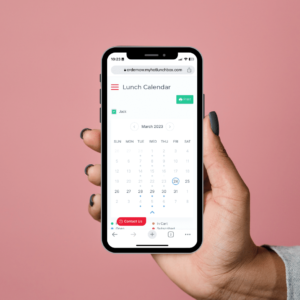There’s no denying that spending time outdoors can boost our happiness, clear up our headspace, and make us feel more at peace — especially in the warmer months. For some, those days might be right around the corner, but for many of us, we are still deep in winter, and spending the majority of our days indoors can get old, fast. Fortunately, many of nature’s profound effects on both health and happiness can be mimicked inside your home with just a few houseplants!
What Are the Benefits of Having Indoor Plants?
Healthline released an article in September of 2019 revealing seven science-backed benefits of living and working with indoor plants. We’ve highlighted just a few of them here:
- Indoor plants may help reduce stress levels: Don’t we all need a little help in that arena? A study published in the Journal of Physiological Anthropology concluded that interacting with plants throughout the day can help reduce both physiological and psychological stress. Simply put, bringing plants into your home and office can help facilitate more comfortable, natural, and soothing feelings.
- Real plants may sharpen your attention & boost your productivity: Plastic plants may look nice and be effortless to take care of, but sadly, they won’t help you concentrate any better or move any faster. In a small study conducted at Konkuk University to determine the benefits of foliage as visual stimuli, it was concluded that students who studied with real plants around proved to be more attentive and better able to concentrate than those who did not. Additionally, many studies have found that plants within the workplace help boost productivity and creativity. Who’s ready to green up their office?
- Working with plants can be therapeutic & help you recover from illness faster: If the first two reasons alone weren’t enough to convince you, bringing plants into your home can actually help speed up recovery for both physical and mental illnesses. This study, conducted at Chalmers University of Technology, revealed that individuals who were able to look at greenery during their recovering period from surgery needed less pain medication and had shorter hospital stays than those who were not. Furthermore, horticultural therapy has been around for centuries and has proven to increase feelings of well-being among those with depression and anxiety.
Prepping Your Space for Happy Houseplants
Whether you’re planning for an indoor herb garden or just bringing in some greenery to boost your aesthetic, there are a few things you’ll need to do to prepare. We’ve listed a few of our favorite tips from Erin Harding and Morgan Doane’s book, “How to Raise a Plant and Make it Love You Back”:
- Check the lighting: Before bringing any houseplants in, take a moment to evaluate your indoor lighting situation. Be sure to look for which direction the sunlight comes from, check for any light obstructions (window treatments, tall buildings, fences, etc.), and consider how far back into a room the sunlight reaches. Once you’ve done your walkthrough, you can decide which areas are best to place your new vegetation.
- Use what you know about your space to select houseplants that will thrive in your conditions: If you can mimic a plant’s natural environment it will be happier & healthier in the long run. That’s not to say you can’t bring a tropical houseplant into a dry environment if you have a humidifier handy!
- Check for pests and consider quarantining your plant once you get home: You can always count on it being a good day when you purchase new houseplants — the only thing that could spoil it is bringing an infested one home. When picking out the plant you want, you want to be sure to inspect it closely. Be sure to check the soil for movement along with the stems and undersides of the leaves. It’s always a good idea to quarantine your newly purchased plants for about a week to give yourself enough time to identify any issues and treat them as needed.
- Stock up on necessary tools and materials: For starters, your primary focus should be stocking up on soil, fertilizer, and containers. For houseplants, a standard store-bought potting mix should work great. Most potting mixes have nutrients that will provide your plants with enough food for up to six months, then, you should consider repotting and purchasing a fertilizer to add to the soil. As far as containers go, feel free to get creative with them! There are so many styles and textures from terra-cotta to mesh — just be sure your containers provide adequate drainage and you’re set!
Tips for Creating a Successful Herb Garden
Now that we’ve prepped you on bringing plants into your home — let’s take it one step further and talk about creating a successful herb garden that you’ll actually use. How to Culinary Herb Garden provides an array of tips and tricks on planting, maintaining, designing, and improving an indoor herb garden. We’ve highlighted a few pieces of advice to help get you started:
- Grow each herb in a separate pot: Growing herbs inside is much easier when they each have their own separate pots. Remember what we said about mimicking a plant’s natural environment? This would be almost impossible if they were all in one container. Each herb will have its own needs and having them separate allows you to address them individually.
- Feed your herbs with seaweed or fish-based fertilizer: When planting an herb garden, the best type of fertilizer to use is either seaweed extract or fish emulsion. Both of these products have a higher concentration of nitrogen, promoting stronger, leafier growth.
- Indoor temperatures should stay between 60-70 degrees Fahrenheit: Indoor herbs do best when the temperature is between 65 and 70 degrees, however, basil thrives when it’s warm and would prefer to be at a steady 75 degrees, if possible. These temperatures typically work well indoors but be sure to keep an eye out for any windows that get too warm or too drafty.
- Provide good air circulation: It’s important to consider there’s no wind inside your home, therefore, it is up to you to provide good air circulation for your herbs. Be sure your herbs aren’t placed too close together and don’t be afraid to rearrange them every once in a while.
- Show your indoor herbs some love: We’ve all been told that communicating with your plants can encourage them to grow faster, but how? Talking to your plants actually helps by releasing carbon dioxide that plants use to convert to food. Additionally, you can gently brush the tops of your herbs to stimulate the motion of wind blowing and promote strong, healthy stems.
Let’s Talk About DIY Plant Displays
Now onto the fun part! Bringing plants into your home gives you even more freedom when it comes to home decor — allowing you to get creative with how you’re going to hang, display, and highlight your greenery. We’ve linked just a few DIY projects below for inspiration:
Who’s ready to start planting?! If you enjoyed this blog post and want to learn even more about gardening, the “Bloom and Grow” podcast provides expert advice on plant care and wellness. We would love for you to tag us on Facebook or Instagram with photos of your happy houseplants too!
Written by: Shelby Candler
Photo by Annie Spratt on Unsplash





